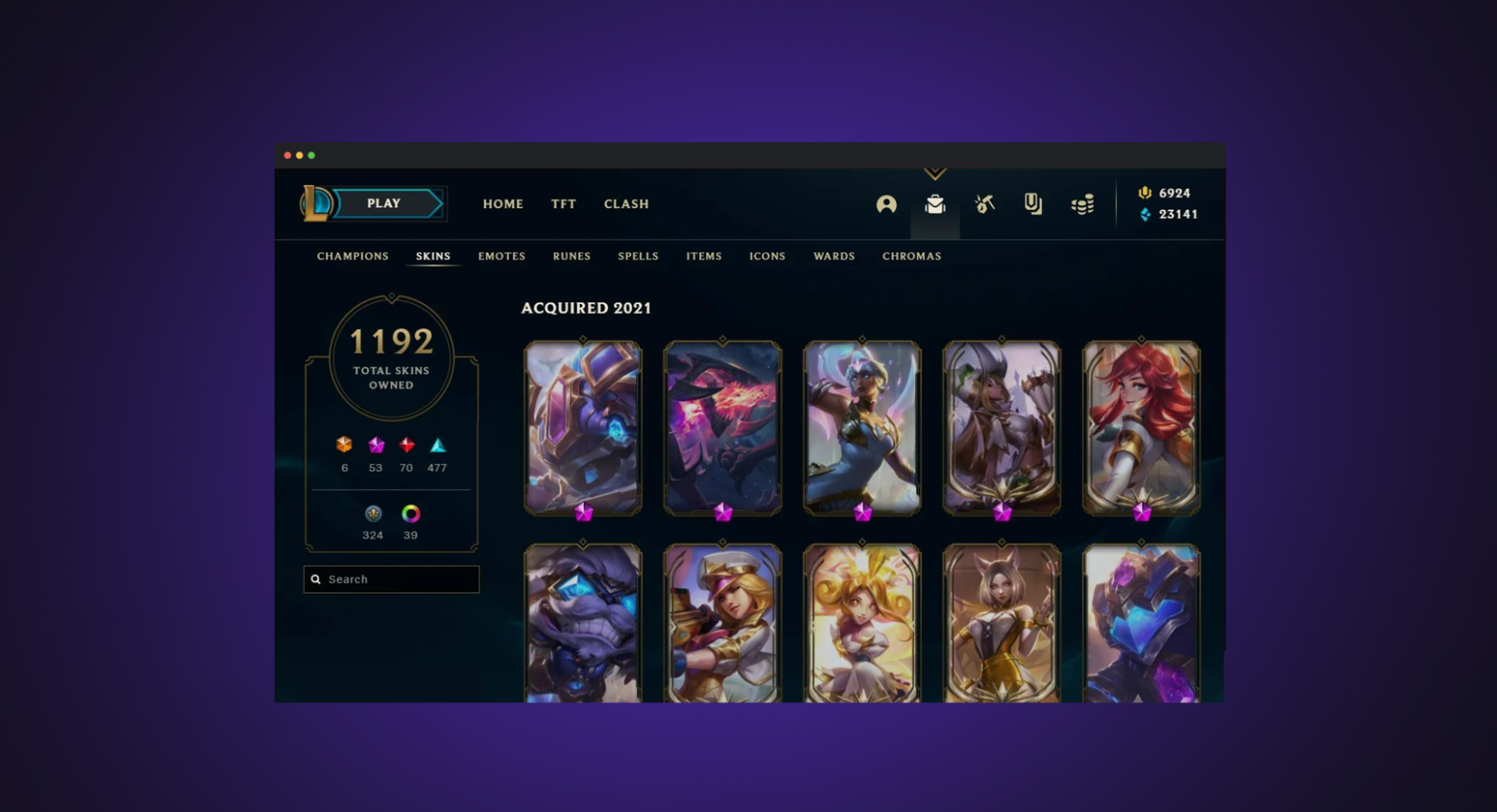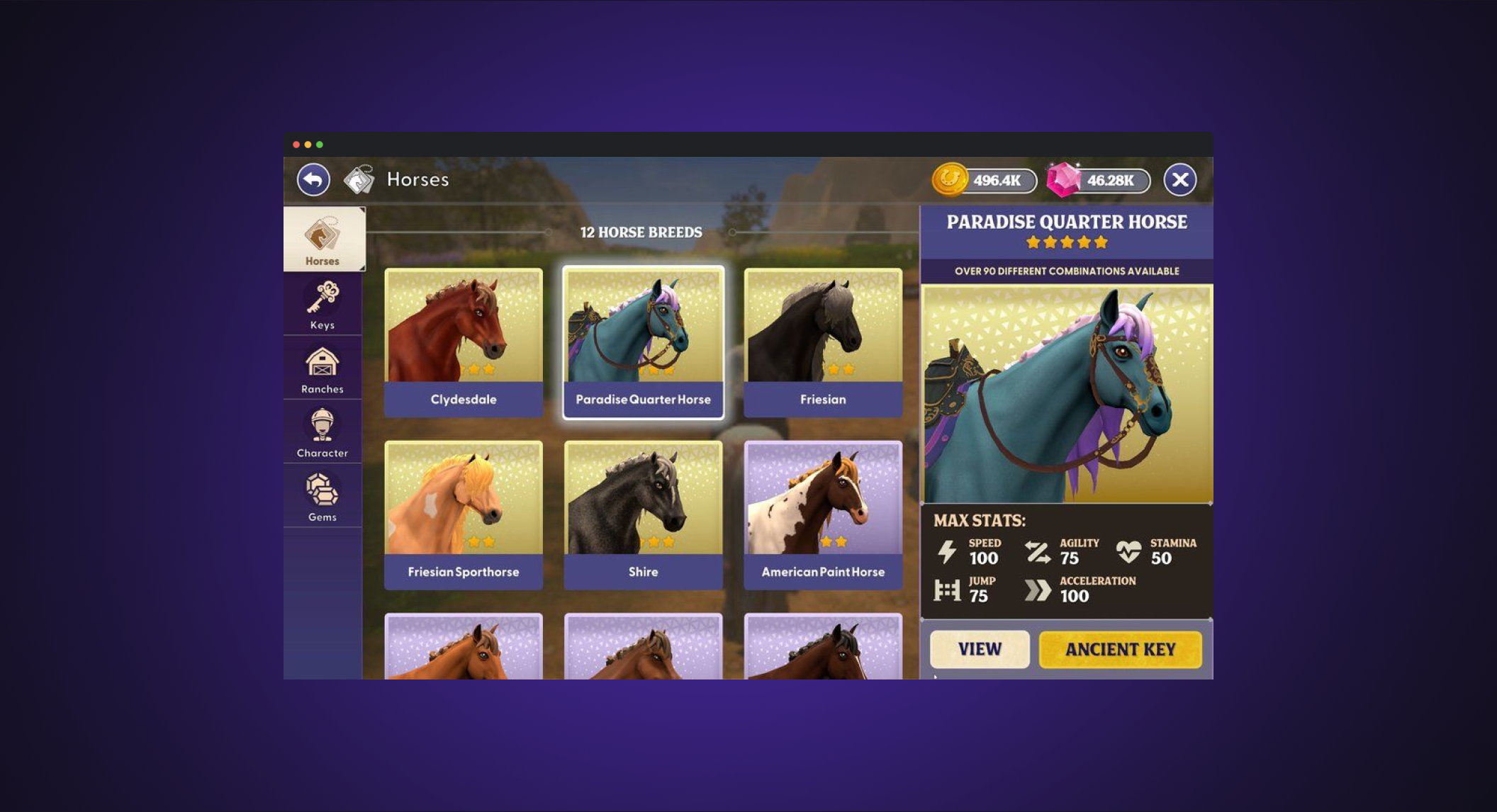In-game purchases
Mobile
Revenue
Vanity sells: How self-expression drives game revenue
February 21, 2025•6 min
Monetization is the lifeblood of the gaming industry. Whether blockbuster AAA titles or indie gems, all games rely on monetization to sustain their development, support their teams, and ensure continuous revenue flow. A well-designed monetization strategy keeps the business afloat and enables the creation of better content and experiences for players. In today's competitive market, understanding how to design effective monetization systems is essential for any game developer.
In this blog series, we'll examine what motivates video game players to buy things—both in-game and online. There are six main factors: time-saving, efficiency-boosting, user experience optimization, vanity, social pressure, and additional content. In this article, we focus on how to use vanity to encourage players to buy more from your game or web shop.
Vanity is a powerful tool for players to express themselves in diverse and meaningful ways. Vanity-based monetization is a core revenue driver for many games, particularly competitive multiplayer titles. Still, it plays a crucial role in shaping player experiences in both singleplayer and multiplayer games.


Players often seek skins, character models, animations, and sprays to differentiate themselves from others. In a multiplayer environment, having unique visual elements can create a sense of prestige and a way to express personal style. When players invest in distinctive skins or animations, they make a statement about their gaming persona, attracting attention and admiration from their peers. Desire to embody a fantasy character
Pre-made character skins allow players to step into the shoes of imaginative and often larger-than-life personas. Whether it’s a mythical warrior, an iconic hero, or a whimsical creature, these skins allow individuals to immerse themselves in a fantasy setting. This connection to an idealized character not only enhances the gaming experience but also fulfills a deeper desire to escape reality and explore different aspects of oneself. Desire to craft a personalized aesthetic
Customizable elements for characters and environments provide another layer of personalization. Whether it’s color schemes, outfits, or environmental features, these options enable players to tailor their experience according to their tastes. This level of customization fosters a sense of ownership and attachment to the game, as players can create a virtual space that genuinely reflects their personality and aesthetic preferences. However, vanity monetization isn't just about providing customization options—it's about offering the right customization options. Players don't just want a new look. They want to communicate their identities and preferences in visually striking ways. They want a specific, recognizable look that holds social or personal value. This not only enriches their gaming experience but also fosters community connections based on shared interests and creativity. To that end, there is a third key player in the monetization ecosystem: licensors. Players are drawn to outfits, items, and designs that are socially relevant—something their friends or the wider gaming community recognize. This is why successful games invest in licensing high-demand, recognizable content:
 By strategically including exclusive seasonal cosmetic bundles as the ultimate reward in a seasonal reward chain on the web platform, you’ll incentivize players to engage with the game and progress throughout the season, improving their engagement and retention.
By strategically including exclusive seasonal cosmetic bundles as the ultimate reward in a seasonal reward chain on the web platform, you’ll incentivize players to engage with the game and progress throughout the season, improving their engagement and retention.
Gregory Radovilskiy, Growth Manager, Game Tech
Game mechanics and obstacles
Vanity is fundamentally about self-expression, which can take two forms: outward-facing and inward-facing. Outward-facing vanity is primarily relevant in multiplayer games. Players seek to showcase their identity to others through various cosmetic items, including character skins and outfits. Beyond visuals, animations and sprays (akin to graffiti) play a key role—allowing players to express themselves through actions, such as performing a victory dance at a defeated opponent or leaving a spray tag at the enemy's base. Inward-facing vanity is more about personal immersion. The motivation here is not about being seen but rather about embodying a character or fantasy. Players might want to feel like Spider-Man or Darth Vader, not just display the character to others. Another form of inward-facing vanity revolves around creating a comfortable, personalized aesthetic. This includes mixing and matching customization elements—tattoos, hairstyles, clothing pieces—allowing players to craft their own unique look. This type of vanity applies to both singleplayer and multiplayer games, but the core motivation remains personal rather than social. In games with a building component, customization extends beyond character design. Players may invest in decorative elements for their personal space, such as home bases, stables, or other customizable environments.- Pre-made character skins – common in multiplayer shooters and competitive games (e.g., Fortnite).

- Animations and sprays – also seen in multiplayer shooters (Fortnite, Overwatch).
- Modular character customization – popular in MMORPGs. For instance, Star Equestrian, an MMORPG focused on horse riding, allows detailed customization of both player avatars and horse decorations.
- Decorative environment customization – Star Equestrian players can personalize their stables, similar to how The Sims or Hay Day allow environmental customization.

Motivation and fulfillment of desires
Vanity-driven purchases in gaming are closely tied to the need for self-expression and individuality. These purchases allow players to showcase their unique identities, preferences, and creative desires within the game world. Desire to stand outPlayers often seek skins, character models, animations, and sprays to differentiate themselves from others. In a multiplayer environment, having unique visual elements can create a sense of prestige and a way to express personal style. When players invest in distinctive skins or animations, they make a statement about their gaming persona, attracting attention and admiration from their peers. Desire to embody a fantasy character
Pre-made character skins allow players to step into the shoes of imaginative and often larger-than-life personas. Whether it’s a mythical warrior, an iconic hero, or a whimsical creature, these skins allow individuals to immerse themselves in a fantasy setting. This connection to an idealized character not only enhances the gaming experience but also fulfills a deeper desire to escape reality and explore different aspects of oneself. Desire to craft a personalized aesthetic
Customizable elements for characters and environments provide another layer of personalization. Whether it’s color schemes, outfits, or environmental features, these options enable players to tailor their experience according to their tastes. This level of customization fosters a sense of ownership and attachment to the game, as players can create a virtual space that genuinely reflects their personality and aesthetic preferences. However, vanity monetization isn't just about providing customization options—it's about offering the right customization options. Players don't just want a new look. They want to communicate their identities and preferences in visually striking ways. They want a specific, recognizable look that holds social or personal value. This not only enriches their gaming experience but also fosters community connections based on shared interests and creativity. To that end, there is a third key player in the monetization ecosystem: licensors. Players are drawn to outfits, items, and designs that are socially relevant—something their friends or the wider gaming community recognize. This is why successful games invest in licensing high-demand, recognizable content:
- First-person (or third-person) shooter games license characters from movies and TV shows.
- Games with deep customization mechanics license fashion, decor, or vehicle brands.
Vanity in the context of a Web Shop
Selling vanity items directly in a web shop can be challenging due to the sheer variety of cosmetics required to support self-expression. Instead of listing individual skins or items, a more viable approach is:- Providing additional value through in-game currency purchases on the web platform, such as offering a bonus of 15-20% extra currency with each

- Offering curated and more valuable decoration bundles with full sets rather than individual elements
 By strategically including exclusive seasonal cosmetic bundles as the ultimate reward in a seasonal reward chain on the web platform, you’ll incentivize players to engage with the game and progress throughout the season, improving their engagement and retention.
By strategically including exclusive seasonal cosmetic bundles as the ultimate reward in a seasonal reward chain on the web platform, you’ll incentivize players to engage with the game and progress throughout the season, improving their engagement and retention.
Conclusion
Vanity-driven monetization through unique cosmetic items and personalized aesthetics plays a vital role in enhancing player engagement and satisfaction within games. Understanding the motivations behind these purchases — whether it's the desire to stand out, embody a fantasy, or craft a personalized environment — allows you to design appealing customization options that resonate with your specific players. If you want to maximize your game's monetization potential, check out Xsolla Web Shop. You can offer exclusive in-game currency deals, seasonal cosmetic bundles, and more—boosting your player engagement and revenue beyond traditional storefronts. Ultimately, effective vanity monetization not only generates more money for the game, but also enriches the gaming experience overall. A community where individual expression thrives will make players feel a stronger connection to your game and brand. Authors Elena Zueva, Head of Monetization Product MarketingGregory Radovilskiy, Growth Manager, Game Tech
Featured articles
Explore our
latest articles
Contact us
Talk to an expert
Ready to maximize revenue opportunities? Reach out to our experts and learn how to start earning more and spending less.
